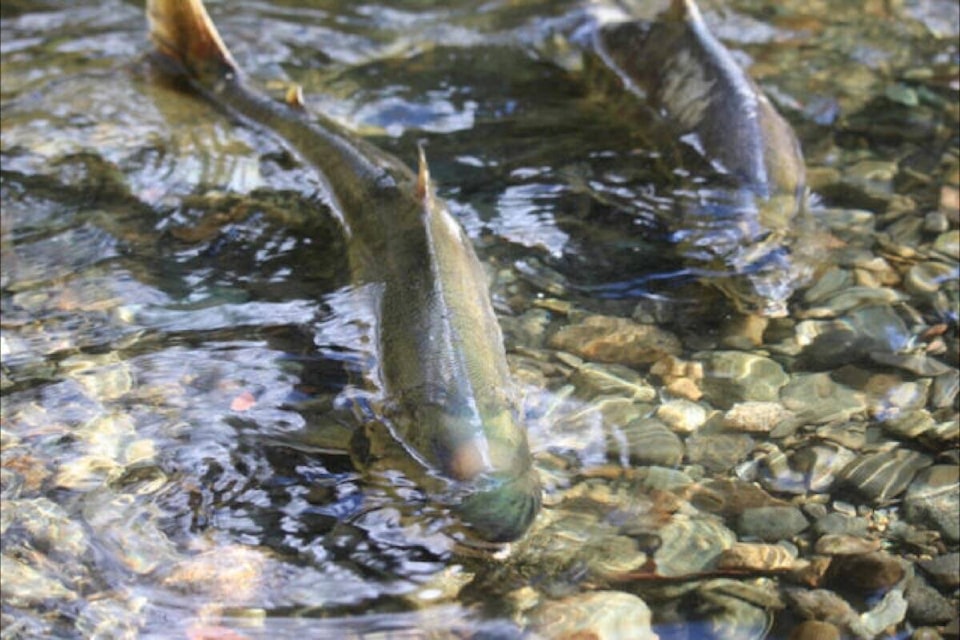The City of Duncan is looking to rejuvenate one of its fish spawning areas.
At the council meeting on Jan. 17, council approved a staff recommendation to apply for an approximately $278,000 federal grant to help replace two failing culverts in Fish Gut Alley, a 3.9-hectare naturalized wetland area within the city’s Rotary Park and McAdam Park.
A staff report from Brian Murphy, Duncan’s director of public works and engineering, said Fish Gut Alley provides important fish-rearing habitat and plays a critical role in the parks’ ecological framework.
He said in its early years, in the late 1970s and 1980s, Fish Gut Alley produced upwards of 19,000 fry and smolts, including a strong run of chum and upward of 800 adult coho salmon.
But Murphy said that in recent years, the stream habitat has become choked with sediment and vegetation, and fish production has declined sharply.
RELATED STORY: B.C. STUDY SHOWS SUSTAINABLE MANAGEMENT OF SALMON FISHERY BEFORE COLONIZATION
“Reduced runs of these salmon, possibly due to access limitations created by dike upgrades and the degradation of the culverts through the dike has interrupted the natural yearly turning over of the gravel within the channel by spawning salmon,” he said.
“Without natural turnover, fine sediments and organic debris have accumulated over the spawning gravel, accompanied by the establishment of dense reed canary grass which reduces the flow velocities required to help keep spawning gravel clear. This has reduced the effectiveness of Fish Gut Alley as a spawning channel.”
Murphy said the two failing culverts need to be replaced with one concrete box culvert in order to potentially restore the spawning habitat and fish access through the river dike.
RELATED STORY: PACIFIC SALMON RECOVERY REPORT GIVES 32 RECOMMENDATIONS TO REVERSE SALMON DECLINES
He said subsequent habitat restoration within Fish Gut Alley itself after council approves the project will consist of gravel clearing, reed canary removal, and management of the fringe vegetation.
“This work can only be completed when it is certain that the culverts will be replaced as, otherwise, the habitat restoration will serve no productive outcome,” Murphy said.
“Overall, this project is an opportunity to restore open access to what was historically a highly productive fish spawning habitat. Additional benefits will be improved stormwater management within Fish Gut Alley.”
Additionally, Murphy said the potential to restore Fish Gut Alley to an active salmon spawning habitat will benefit the region as a whole, and potentially other regions on Vancouver Island, if developed into an educational resource similar to Goldstream Park.
Council decided to apply for the $278,000 grant, which would be 73.3 per cent of the project’s cost, from the Investing in Canada Infrastructure Program – Environmental Quality Program, and the city would pay $101,000, if the application is successful.
Coun. Tom Duncan said the restoration of a critical fish habitat would be a very worthwhile project.
“Especially if three-quarters of its costs come from the senior level of government,” he said.
robert.barron@cowichanvalleycitizen.com
Like us on Facebook and follow us on Twitter
